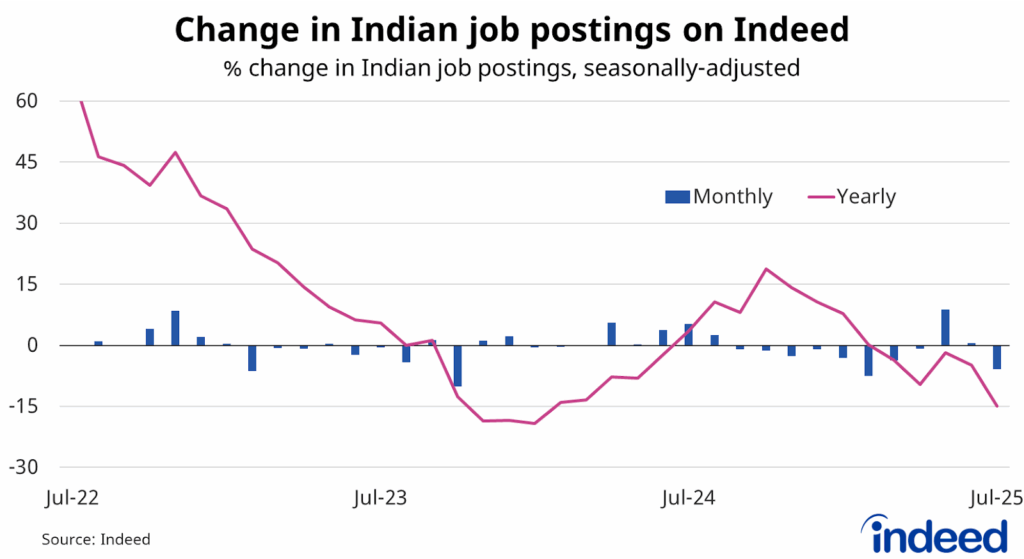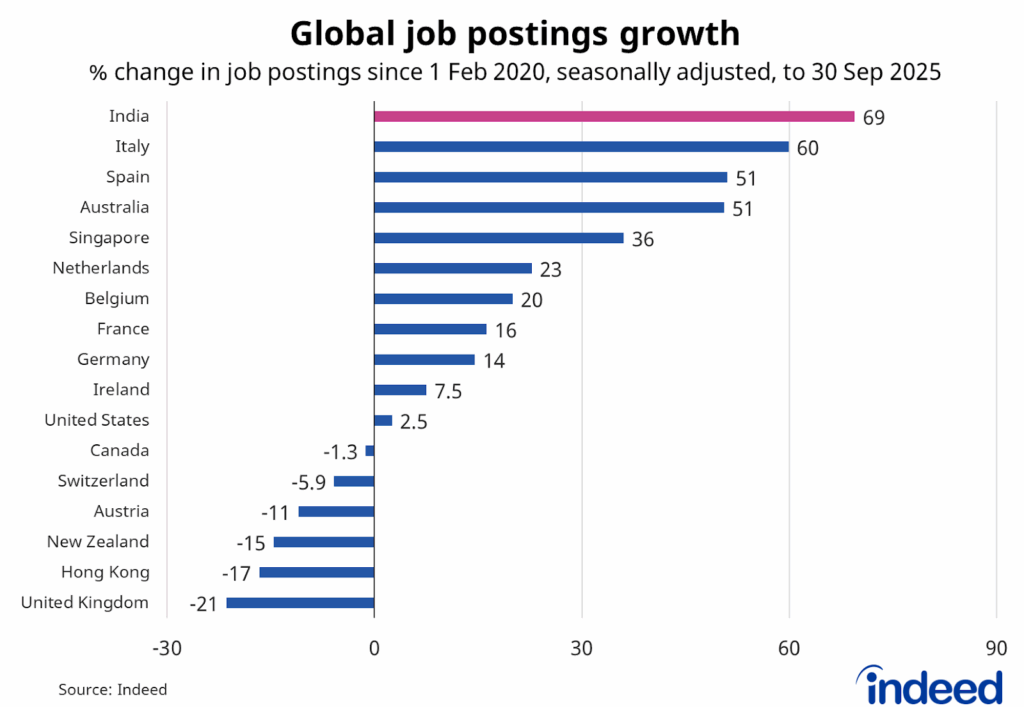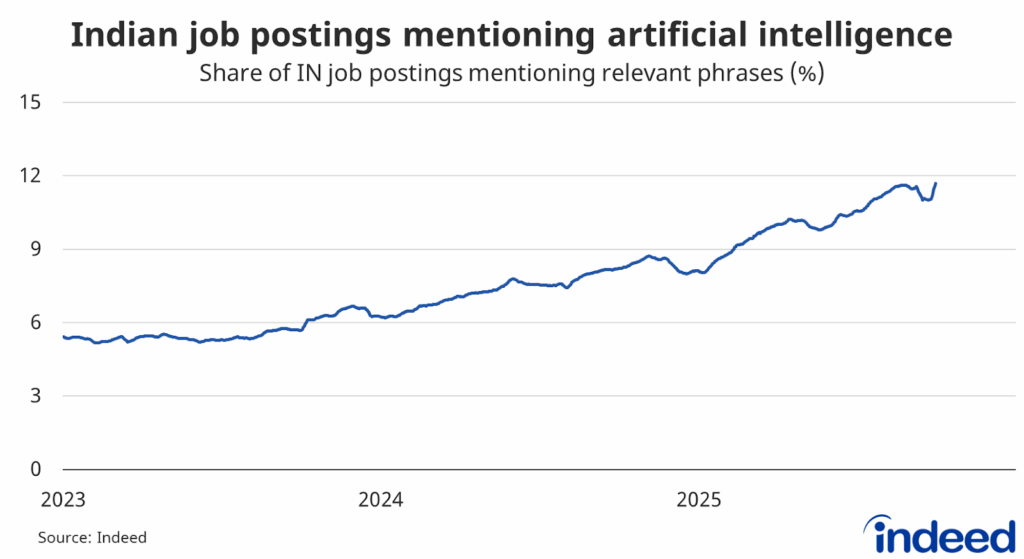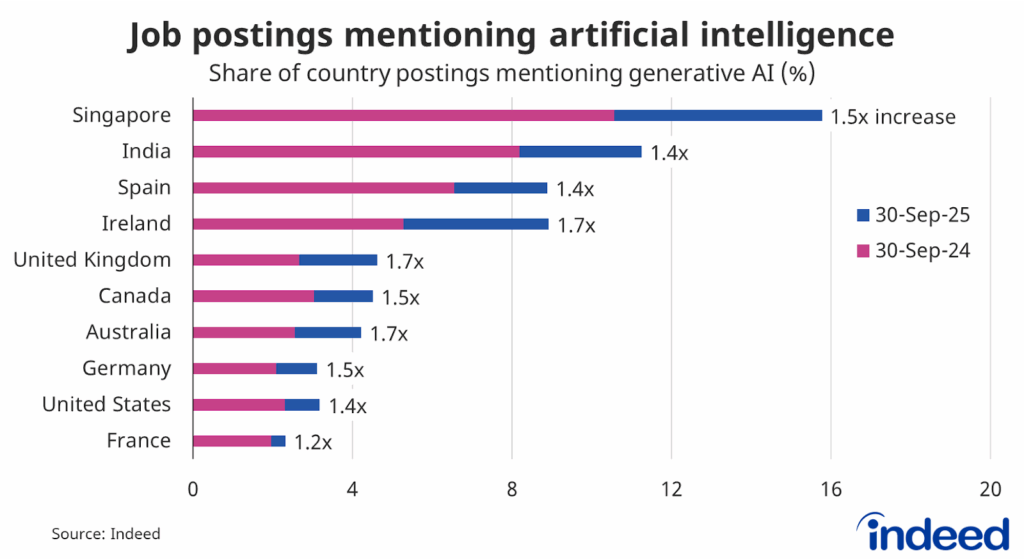Key points:
- Job postings fell 0.8% in September and have trended lower throughout 2025.
- Over the past three months, postings have grown fastest in community & social service, pharmacy and human services, but have declined in most occupations.
- In September, 11.7% of Indian job postings mentioned artificial intelligence in their job descriptions, up from 8.2% a year ago.
In September, Indian job postings on Indeed fell 0.8% — the sixth monthly decline this year — to be 16.2% lower than a year ago. Indian job postings are 69% above pre-pandemic levels, but have fallen 22% since their peak in January 2023.

Indeed’s data captures recruitment by companies and organisations — the formal economy — rather than the informal work arrangements that are common throughout India. Consequently, Indeed’s data is not representative of the overall labour market. It skews towards tech, management and sales, but does provide valuable insight into India’s ongoing economic transition.
Every month, the Indian workforce gradually transitions towards more formal work arrangements. As the nation transitions, job creation across the formal sector will outpace overall employment growth nationwide. This transition is also why job postings in India have been stronger than in other Indeed markets, both during the post-pandemic job boom and the subsequent slowdown.

Recent posting growth mixed across occupations
Over the past three months, job postings declined in more than 90% of occupations. A handful of occupations, however, bucked that trend, led by community & social service and pharmacy which increased by 10.4% and 9.9%, respectively. Software development, up 0.4%, also grew modestly.
However, these gains were more than offset by weakness in banking & finance, where postings fell 25.5%, along with education & instruction (-22.1%), security & public safety (-20.9%) and physicians & surgeons (-20.9%).

Artificial intelligence experience in high demand
Employers across India continue to ramp up hiring for artificial intelligence expertise. In September, 11.7% of Indian job postings explicitly mentioned artificial intelligence in their job descriptions, up from 10.6% three months ago and 8.2% a year ago.

India ranks highly against other Indeed markets for AI-related job postings — second only to Singapore. A caveat, though, is that Indeed’s data for India does skew towards the tech sector in a way that isn’t true of other key markets. Nevertheless, it’s clear that many employers across India have a broad-based commitment to integrating AI technologies.

Artificial intelligence is most commonly mentioned in data & analytics (39% of job postings), ahead of software development (23%), insurance (18%) and scientific research (17%).
Demand for skills in artificial intelligence is common across several engineering categories, led by industrial engineering (17%), mechanical engineering (11%) and electrical engineering (9.2%).

Table shows the percentage share of Indian AI job postings by occupation. On 30 September 2025, 38.6% of data & analytics job postings mentioned artificial intelligence in their job descriptions, ahead of software development (22.8%) and insurance (18.2%).
Conclusion
Job creation continues to soften, but job postings remain well above pre-pandemic levels. India’s formal sector continues to perform strongly, with more than enough jobs available to facilitate India’s ongoing economic transition.
India’s larger challenge is simply that there are often mismatches between the skills job seekers possess and the skills employers seek. Many companies in India are looking for highly skilled workers in tech or management, and that won’t always align with what’s on offer. Consequently, skill shortages remain common in India, particularly in higher-skilled segments.


